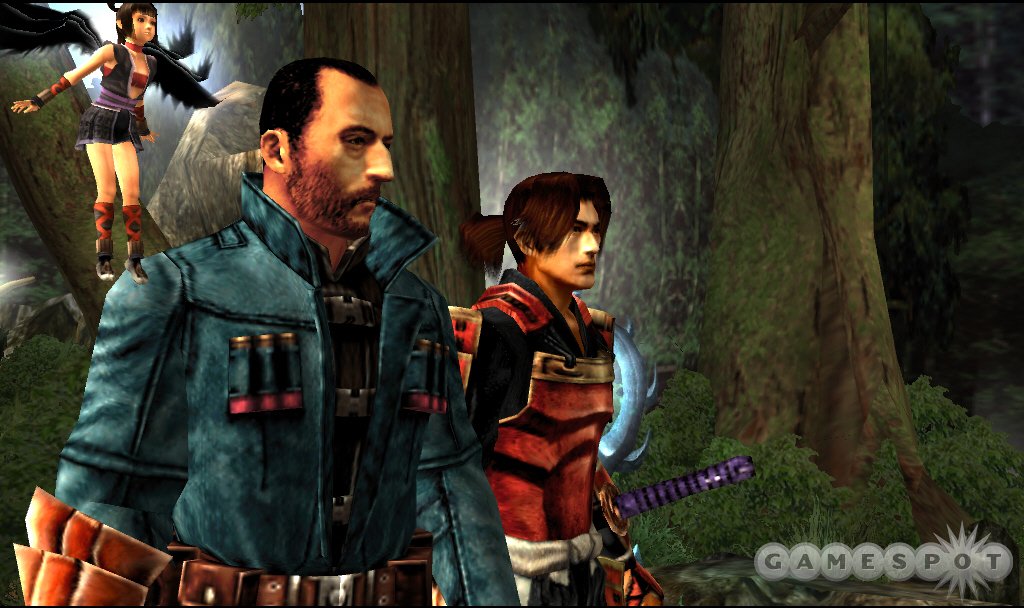
When you hear the name Jean Reno, you probably think of films like Ronin, Léon: The Professional, and The Pink Panther 2. Okay, maybe not the latter. But when you look into the sad, soulful eyes of this legendary French actor, you remember the time he traveled back in time to feudal Japan and played a Parisian police officer who teams up with a samurai to fight demons with a magical whip. It was Reno’s role in the PS2 game Onimusha 3: Demon Siege that nobody seems to talk about anymore.
Developed and published by Capcom, Onimusha 3 was released for the PlayStation 2 in 2004 and sold almost 2 million copies, yet it seems to have been swept under the rug of history. When was the last time you heard someone talk about it? I follow thousands of people on Twitter who are interested in gaming, but I can’t remember the last time I saw someone reminiscing on my timeline. Which is a shame, because this is one of the best games of the PS2 era and should be celebrated as a classic. I know people who have never heard of it.
While previous Onimusha games were set in the Sengoku period of Japan, Onimusha 3 begins in the modern-day streets of Paris. An army of demons invades the French capital, and Samanosuke, the series’ recurring hero, pursues them through a swirling time portal. He teams up with a French policeman named Jacques Blanc (Rino, of course), and the two fight the invaders, but Blanc is accidentally transported back to medieval Japan, and Samanosuke is left alone in Paris.
If this all sounds ridiculous, it is – and that’s exactly what makes Onimusha 3 so great. Capcom has invested huge amounts of money into the most imaginative, daring, outlandish and unconventional concept here, and hired a cult Hollywood actor just for fun. Why is this French gendarme, played by a native of Leon, fighting demons in a 16th-century bamboo forest? Why not? The creativity and variety in Onimusha 3 was and still is truly amazing. Games like it just don’t exist anymore today.

Onimusha 3 has a lot in common with the Resident Evil series, including the same fixed camera angles, inventory management and approach to puzzle design, but there’s a stronger focus on combat. Samanosuke uses magically imbued samurai weapons like swords and bows to ward off demons, while Jack prefers a crackling energy whip. At times, you’ll also take on the role of Jack’s girlfriend, Michelle, who has an entire arsenal at her disposal, making the game feel truly Resi-like.
The combat is fantastic: weighty, responsive, and stylishly animated. Attacking at the exact moment an enemy attacks triggers an instant death called a “flash” that feels incredibly satisfying. Fighting as Samanosuke or Jack feels very different, and along with the selection of unlockable magical weapons it keeps things fresh. And that’s a good thing, as you’ll be slaying a lot of demons over the course of the game. Though it does have some puzzles, Onimusha 3 is primarily a combat-focused action game.
But what’s really great about Onimusha 3 is that the story is split between two entirely different time periods. Despite being separated by centuries, Samanosuke and Jack are able to communicate and even exchange items. A fairy companion named Ako travels freely through time to pass items and messages between the two of them. There are also some nice time puzzles in which Jack changes something in the past, paving the way for Samanosuke in the present.
It’s especially painful to see Capcom lose interest in the series, because Onimusha 3 is such a good video game. Some fans complained that it had lost sight of its samurai roots, and the next game, Dawn of Dreams, returned to a purely feudal setting. But it was terrible, and poor sales, combined, led Capcom to consign Onimusha to the trash heap. It’s dead now, and may never come back, but that doesn’t mean we should forget just how great Onimusha 3 was. It deserves so much more.

Leave a Reply